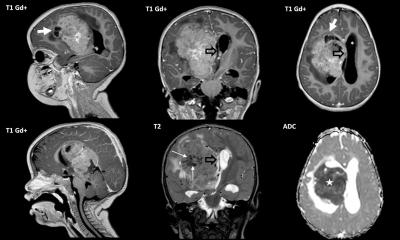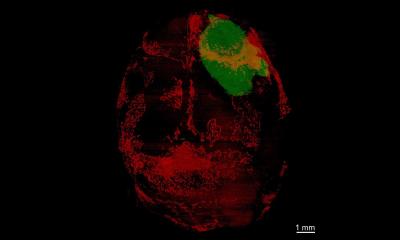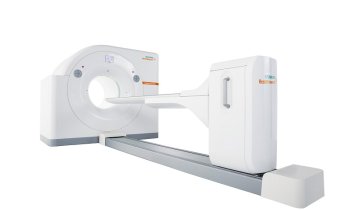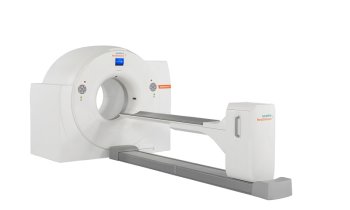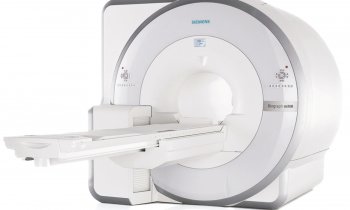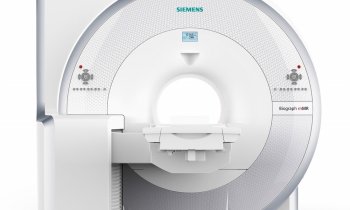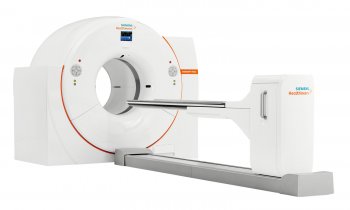News • Childhood cancer
Molecular super-enhancers determine progression of neuroblastomas
Childhood neuroblastomas display extreme differences in the way they develop: they can shrink spontaneously or spread aggressively to healthy tissue. It is molecular super-enhancers that activate the regulatory circuits that steer the tumor down one path or the other.
These are the findings of research conducted by scientists from the Hopp Children's Cancer Center Heidelberg (KiTZ), the German Cancer Research Center (DKFZ) and the University of Heidelberg.
The scientists published their findings in the journal Nature Cancer.
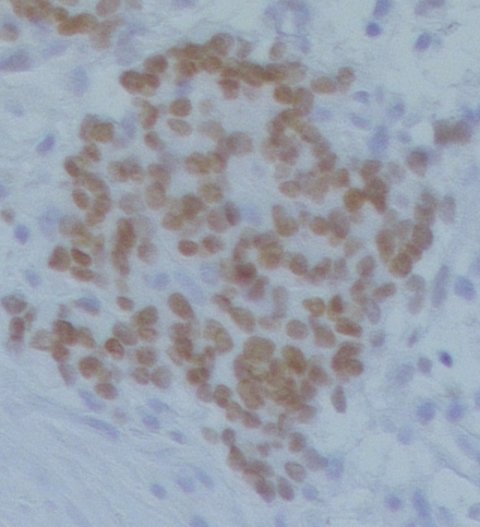
© F. Westermann/KiTZ
Neuroblastomas are the second most common form of solid tumor found in children, after brain tumors. The tumors develop from immature precursor cells of the nervous system and occur in the adrenal glands, along the spine, in the chest or abdomen. Around half of children with neuroblastomas have a poor prognosis, while in some young patients, the tumor can shrink spontaneously, even without therapy. "These different biological characteristics are caused by different genetic programs in the tumors," explains Frank Westermann, who works at the KiTZ and the DKFZ. "Until now, however, it was unclear how exactly these different regulatory networks are controlled."
Together with colleagues led by Carl Herrmann at Heidelberg University's Medical Faculty, his team investigated molecular genetic networks and their switches in neuroblastoma tumors in a total of 60 patients. Some of the patients had already developed metastases or had suffered a relapse.
Recommended article

Article • PRIMAGE project
Aiming AI at lethal paediatric tumours
La Fe University and Polytechnic Hospital in Valencia, Spain, is coordinating EU-funded program PRIMAGE, which uses precision information from medical imaging to advance knowledge of the most lethal paediatric tumours, by establishing their prognosis and expected treatment response using radiomics, imaging biomarkers and artificial intelligence (AI).
The researchers focused on enhancers – regions of the genome that regulate the activity of certain genes, for instance by acting as docking sites for regulatory proteins (transcription factors). Groups of enhancers with a particularly strong potential to enhance central cell processes are also called 'super-enhancers'. They have been associated with tumor development in other types of cancer in the past. This latest study, the most comprehensive mapping of enhancers in neuroblastomas to date, using innovative computer-aided approaches, has now shown that there are differences in the distribution and activity of super-enhancers in the tumor genomes of individual neuroblastomas.
Interestingly, there appears to be a common master regulator above the super-enhancers that ensures that certain essential genes remain active in all tumors
Carl Herrmann
Using these patterns, the scientists were able to assign the patients to four new risk groups. Until now, neuroblastomas have only been roughly divided into two molecular genetic groups based on data from cell lines. "In certain neuroblastomas we have identified a group in which the super-enhancers are activated by MYCN transcription factors," says Frank Westermann. "MYCN is a very unfavorable prognosis factor for neuroblastoma, and patients with high MYCN expression are generally classed as high-risk patients." In two other groups, however, MYCN activation appeared not to play a role. These included some more benign and some more aggressive tumors. In the fourth group of neuroblastomas, the researchers discovered a previously unknown correlation between the super-enhancers and activation by the RAS cancer gene. These patients had already suffered a relapse.
The team was also able to demonstrate that differences in the super-enhancer maps lead to different genetic programs by analyzing genome-wide gene activity. "Interestingly, there appears to be a common master regulator above the super-enhancers that ensures that certain essential genes remain active in all tumors," Carl Herrmann explains. For instance, CCND1, a key gene for the growth of neuroblastoma cells, was overexpressed in all groups.
The scientists are now making the comprehensive datasets available to other researchers via an online interface. "Regulatory switches make promising therapeutic targets for deactivating cancer cells," says Westermann. "Together with other scientists, we are going to be testing the potential of super-enhancers as therapeutic target structures."
Source: German Cancer Research Center (DKFZ)
08.12.2020




